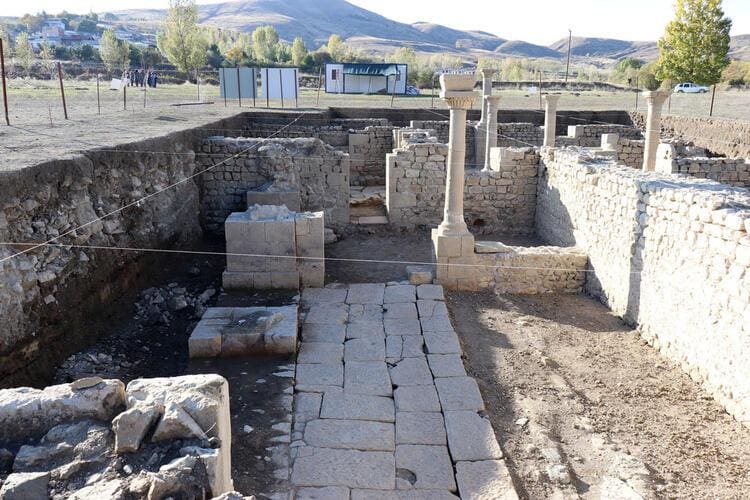For the first time in it’s History a multi-layered legionary cemetery has been uncovered in the ancient city of Satala, which lies in the Kelkit district of Northern Gümüşhane. The area, known as Anatolia was ruled by the Roman Empire for centuries, and in the last days of work being carried out by archaeologists from Bartin University, they came across the Cemetery Structure which upon further investigation dated back to the Roman Imperial period.
Within the cemetery many soldiers were discovered, including the remains of a Cavalry officer who was seemingly buried with his ‘Diplomata’ plate, horse harness and terracotta artifacts. Various weapons were also found including swords, arrowheads, and pieces of iron spears.
The Diplomata is a very important find, and it was mainly given to soldiers once they had completed their 25 years of military service, which was the minimum term during the Imperial period. Made from Bronze, though severely damaged, it’s still a part of history and not many have been found previously.
Şahin Yıldırım, Director of Bartın University Archeology Application and Research Center spoke of their findings commenting that ‘Almost all of the tombs were carved into the bedrock and the skeletons were inside them. A significant part of the finds we found date back to the third century. These are the dates when the Roman Empire lost its former glory and began to weaken’. He also stated that the cemetery was infact found to be multi-level, with the Roman period at the bottom and the Byzantine period above it.
It’s not the first time that the ancient city has been visited by archaeologists… they have in fact been working on the site since 2017, when they uncovered the legion’s castle, home to the 15th Legion, which used to cover an area of around 170,000 square meters. In 2021, they found the entrance gate, further walls & interior structures which for Şahin Yıldırım was a fabulous achievement given that ‘for the first time in Anatolia, it now provides us with important data about both the city walls, the plan type and the structures inside the city walls of a legion castle’
*image credit to https://arkeonews.net





